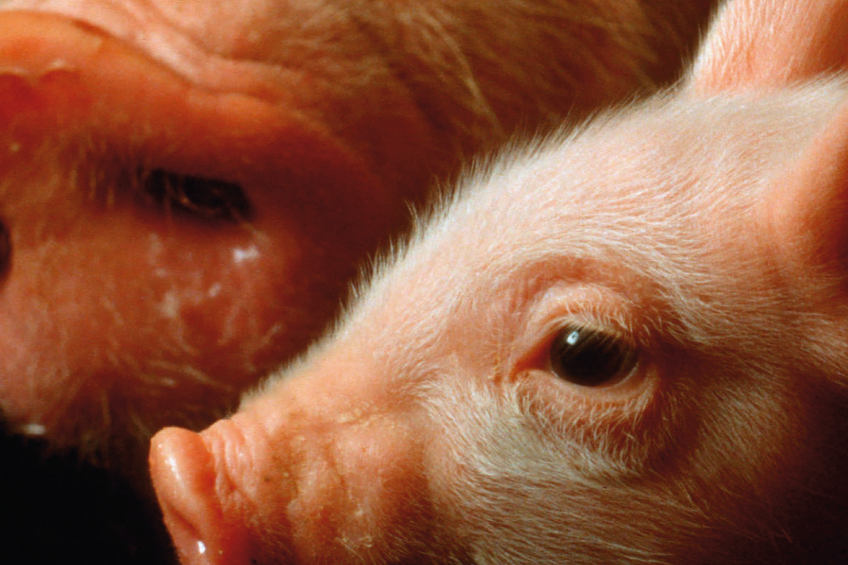Healthy sow gut – higher litter weight

Sows have become more productive, resulting in more but vulnerable piglets. Simultaneously, sows endure large body weight losses during lactation. Keeping a healthy GI tract with stable microbiota is key for a sufficient feed intake and colostrum production.
By Barbara Brutsaert, product manager, Selko Feed Additives and Petra Roubos, researcher, Nutreco R&D
Economics drive pig farmers to produce pork meat at the lowest possible cost. This includes maximising the number of piglets weaned per sow, to keep the piglet cost low. Over the years, through introducing clever breeding programmes and pursuing an intensive selection, sows have become more prolific. They should produce many litters and a large number of viable piglets per litter. Reality tells that it is not always feasible to meet this goal.
An increase in litter size often comes with an increasing number of small and vulnerable piglets. Some of these can be so weak that they get easily crushed or do have not enough energy to get to the sow’s udder for vital colostrum intake, potentially resulting in higher early mortality figures. At the same time, for sows, delivering large litters often means a decreased feed intake during the last days of gestation and an increased weight loss during lactation. This in turn has an impact on their general physical condition and also negatively impact the onset of the next production cycle.
More small piglets
When investigating the effect of litter size on piglet weight the French researcher Dr Hélène Quesnel, the French National Institute for Agricultural Research (INRA), discovered that there is a linear relation: The more piglets in a litter, the lower their weight (Figure 1). Interestingly the increase in litter size came with an almost doubled number of piglets lighter than 1.4 kg. Quesnel also saw that in a litter of less than nine piglets/ sow the number of piglets heavier than 1.4 kg is the same as in litters with more than 16 piglets/ sow. Litter size and parity influence this variation in piglet birth weight, but so do a sow’s age as well as the season of conception. Most importantly, however, piglet birth weight is linked to back fat thickness gain during gestation.
Once piglets are born they should have an excellent start. Unfortunately, the stress associated with parturition can cause dysbacteriosis in sow’s intestines and subsequently affect the intestinal microbiota of neonatal piglets. The latter results in a reduced sow feed intake and can have dramatic consequences for especially those vulnerable piglets born with a low birth weight.
Improved intestinal microbiota
The German researcher Dr Julia Schmalstieg studied the effect of the commensal bacteria Lactobacilli on the integrity of the intestines of sows and piglets during and after parturition. She analysed their faeces and noted that sows with average production numbers of 28 piglets per year had more clostridia in their faeces. Sows with more than 33 piglets per year had more lactobacilli in their faeces. In short, sows with a healthy gut flora are more likely to reproduce larger litters. As there are more small and vulnerable piglets in larger litters, a sow’s healthy gut microbiota is important for piglet health, since the microbiota of the piglet’s developing gut is largely influenced by the microbiota present in the sow’s faeces. This shows the importance of influencing the sow’s microbiota before farrowing.
In the past this could have been done by providing antibiotics, but due to a reduction in the use of antibiotics – often forced by governmental legislations – alternative strategies have to be followed. Selko Feed Additives and Nutreco R&D therefore developed Presan, an integrated approach including stabilisation of the microbiota and enforcing the mucosal barrier properties, supporting the sow’s intestinal tract resulting in improved feed intake during lactation. Field trials showed that this synergistic blend of feed additives helps to produce more lactobacilli and less clostridia in the sow’s faeces (see Table 1). As a result, a more balanced gut microbiota prevents constipation and stimulates colostrum production. Farm employees have also reported a reduction in streptococci problems and better piglet uniformity.
Better start and finish
Four trials conducted in Canada with in total more than 1,000 gilts and sows (parity 1-6; Danbred and Duroc genetics) revealed that feeding a blend of a phenolic compound, slow release C12, target release butyrate, MCFAs and organic acids (Presan) to sows starting one week prior to farrowing has the potential to stabilise their gastro-intestinal tract. For sows, especially during parturition, it is key to have a healthy intestine with a stable microbiota. A healthy gut stimulates feed intake (Figure 2) during lactation, which may increase milk production and therefore piglet weaning weights.
In the first trial the individual weight of piglets was measured. Although the average birth weights were not significantly different (1,356 vs 1,385), the proportion of sows producing heavier piglet weaning weights (6.0-7.0 kg category) increased by 173% (Figure 3). The increased feed intake of 430 g/ day during lactation also reduced the loss in body weight and the sows’ back fat thickness significantly (Table 2), which give them a better start for the next production cycle, as reported by Quesnel. Similar results were seen in a trial carried out under warm weather conditions (+25°C).
Based on these trials it can be concluded that feeding sows a synergistic blend of feed additives supports sow feed intake and their subsequent body condition. The increased feed intake during lactation, allows sows to take better care of their piglets, resulting in higher weaning weights and later technical performances.
[Source: Pig Progress magazine Vol 30 nr 5, 2015]











